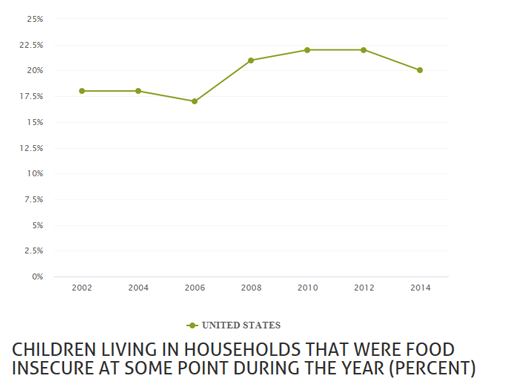One in Five U.S. Kids Lives in a Food Insecure Home

The everyday ritual of putting meals on the table doesn’t take a summer break — and it’s still a major concern for millions of U.S. families, according to the most recent annual data available in the KIDS COUNT Data Center.
These data reveal that nearly 15 million children — or 20% of all U.S. kids — live in households that, at some point during 2014, lacked enough food for everyone in their home.
The percentage of American children facing food insecurity rose during the recent recession and recovery, peaking at 22% of the child population from 2009 to 2012. Though this national rate is now declining, it still sits three percentage points above its pre-recession low of 17%.
At the state level, the rate at which children experience food insecurity varies — and runs from a low of 13% in North Dakota to a high of 29% in Louisiana.
As kids head back to class, free and reduced school meal programs will aim to fill in the gaps — and satisfy the appetites of millions of students across the country.
These programs — including the National School Lunch Program, which served more than 73 million kids in 2016 — are critical to helping all children succeed. Insufficient food intake is linked to host of consequences for kids. For example: Compared to their well-fed classmates, children who experience food insecurity are more likely to be hospitalized, struggle academically and have chronic health problems as well as higher levels of anxiety and depression, according to research.
Get more economic well-being data — at the national and state level — by visiting the KIDS COUNT Data Center.







